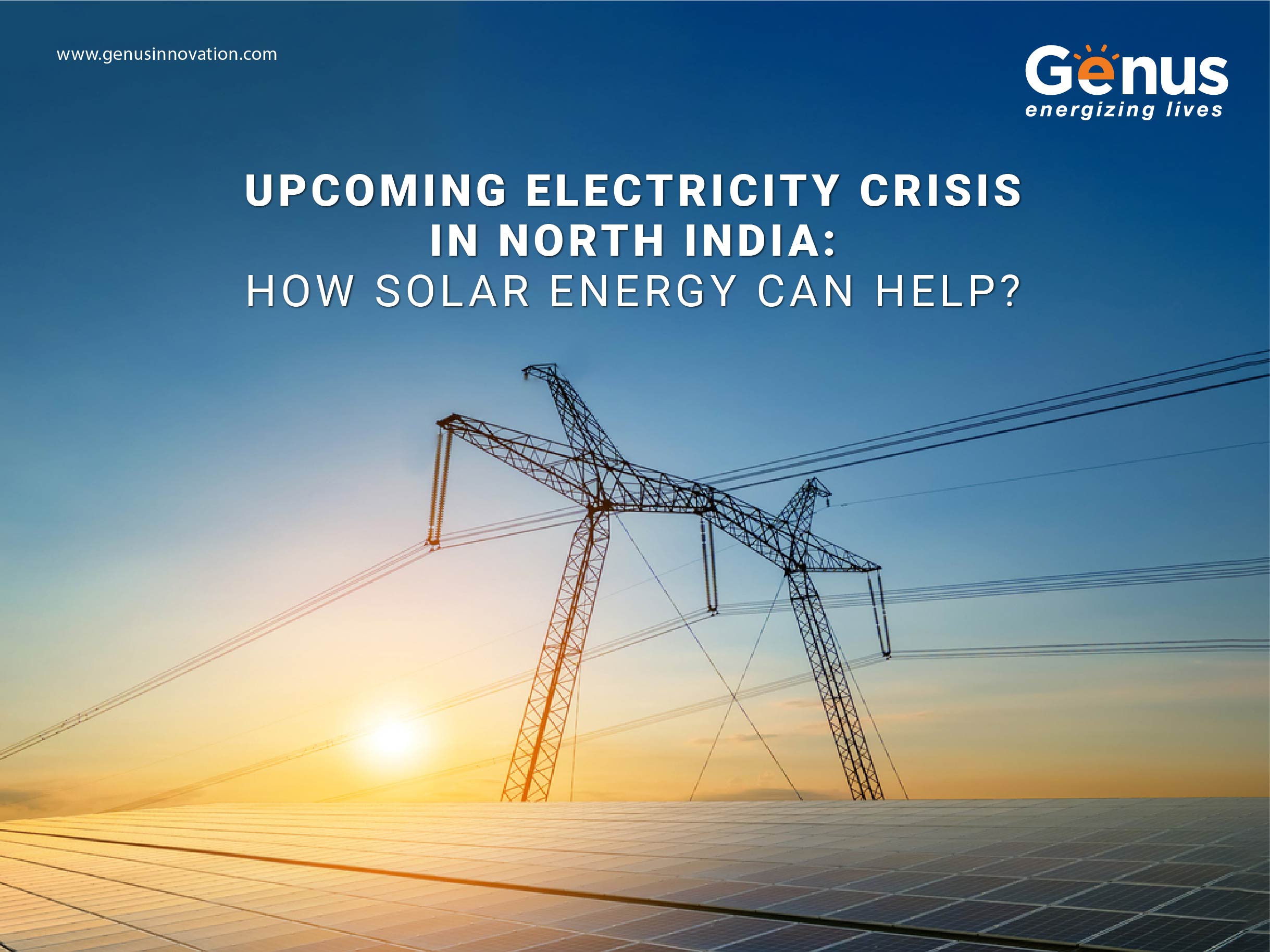The ongoing electricity crisis in North India, particularly affecting regions like Haryana, Punjab, Uttarakhand, Uttar Pradesh, Delhi, Chandigarh, and Jammu & Kashmir, has been a long-standing challenge. For decades, this issue has disrupted the lives of millions, and recent years have seen it escalate further. Many states now face regular power outages and load shedding, especially during peak summer months.
As we head into summer, the outlook isn't promising. Much of North India is expected to endure prolonged power cuts, exacerbating the already strained electricity infrastructure. In this post, we’ll delve into the root causes of the crisis and explore potential solutions.

### Causes of the Electricity Crisis in North India
One major factor driving the anticipated power cuts is the soaring demand for electricity due to the intense summer heat. Air conditioners, fans, and other cooling appliances are being used extensively, putting immense pressure on the grid.
Investment in renewable energy sources, especially solar power in India, has been insufficient. As a result, the country remains overly reliant on fossil fuels, which are both costly and environmentally damaging. According to the International Energy Agency, India's energy consumption is set to double by 2040. However, the supply of electricity hasn’t kept up with this growth, leading to frequent blackouts and load shedding.
Coal and gas-fired power plants are grappling with fuel shortages, reducing their ability to generate electricity. Hydroelectric plants are also struggling due to low water levels, further compounding the electricity crisis.
### States Hit Hardest
#### New Delhi
In the nation’s capital, temperatures are reaching highs of 42 to 46 degrees Celsius. Power plants are under strain due to inadequate coal supplies. In April alone, demand exceeded production capacity, creating a significant shortfall.
#### Uttar Pradesh
With just 25% of its coal reserves left, Uttar Pradesh is dealing with a critical power shortage. Given its status as India’s most populous state, the situation is dire.
#### Uttarakhand
Uttarakhand is also facing power cuts, partly due to increased summer demand and the shutdown of a gas-powered plant in Kashipur, as mentioned by UPCL Managing Director Anil Kumar.
#### Bihar
Bihar is witnessing a daily power deficit of 200-300 megawatts, triggered by a sudden surge in demand. Urban and rural areas alike are affected by these shortages.
### Solutions to the Electricity Crisis
To alleviate the impact of power cuts, several practical solutions exist. Investing in modern technology and infrastructure can enhance the efficiency of the power sector. This involves upgrading power plants, transmission lines, and distribution networks to minimize losses and ensure consistent supply.
Promoting renewable energy sources, such as solar and wind power, presents another viable option. These alternatives are becoming more cost-effective and can play a crucial role in managing demand. Encouraging the adoption of solar systems for homes is also key. Such setups allow users to produce their own electricity and reduce reliance on the grid.
Solar energy is a sustainable and renewable resource that can provide reliable power, even during outages. With the right solar configuration, users can store surplus electricity in batteries. Thanks to decreasing solar panel prices in India, transitioning to solar energy is increasingly feasible.
Solar power offers numerous benefits over conventional energy sources. It is cost-effective, requires little maintenance, and is eco-friendly, emitting no greenhouse gases. Harnessing solar energy not only addresses immediate power needs but also aligns with long-term environmental goals.
### Conclusion
India’s electricity crisis demands a comprehensive strategy to resolve. While the government has taken steps to tackle the issue, leveraging solar energy stands out as a forward-thinking solution. By adopting solar systems, individuals and businesses can generate their own electricity and maintain power independence.
Beat the summer power cuts with Genus Innovation’s solar products! Make the switch to solar and take control of your energy future today!

LINGWO UV Curable Adhesive is a high-performance, fast-curing specialty adhesive designed for precision electronics, optics, medical and industrial manufacturing. The following are its core features and typical applications:

​Core Performance Features
​Ultra-fast curing
- Curing within seconds under ultraviolet (UV) irradiation, significantly improving production efficiency.
- Supports room temperature curing without heating, suitable for heat-sensitive materials (such as plastics, flexible circuit boards).
​High transparency and weather resistance
- After curing, the transmittance is greater than 90%, the surface is smooth and bubble-free, suitable for optical devices (camera modules, lens bonding).
- Resistant to UV aging and yellowing, suitable for outdoor or long-term lighting environments.
Strong bonding and reliability
- Strong bonding to glass, metal, ceramics, PC, PMMA and other materials (shear strength can reach 5-20 MPa).
- High temperature resistance (-40℃~120℃), vibration resistance, meet the stringent requirements of automotive electronics, medical equipment, etc.
​Environmental protection and safety
- Solvent-free, low VOC emissions, in compliance with RoHS/REACH environmental standards.
- Low toxicity, it is recommended to wear protective equipment (goggles, gloves) during operation.
Process flexibility
- Supports multiple processes such as dispensing, coating, printing, etc., and is compatible with automated equipment.
- Customizable colors (transparent, black, etc.) and curing speeds to meet the needs of different scenarios.
Typical applicationÂ
- Consumer electronics: mobile phone screen lamination, camera module packaging, fingerprint recognition module fixation.
- Automobile manufacturing: headlight sealing, sensor bonding, wiring harness fixation.
- Medical devices: disposable syringe assembly, catheter sealing, optical endoscope component bonding.
- Optical devices: fiber coupling, lens bonding, AR/VR optical component fixation.
wire solder joint protection UV glue,glue for electronic connections,uv conformal coating
Dongguan Shuangzhan Industrial Co.,Ltd , https://www.lingwogroup.com